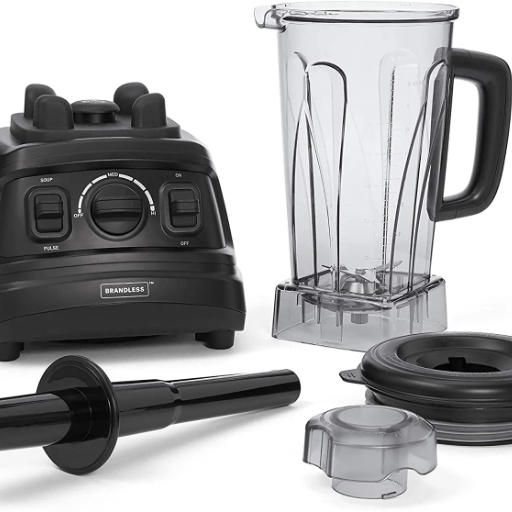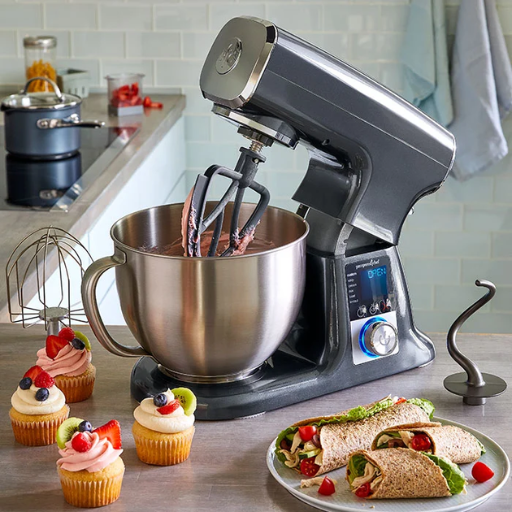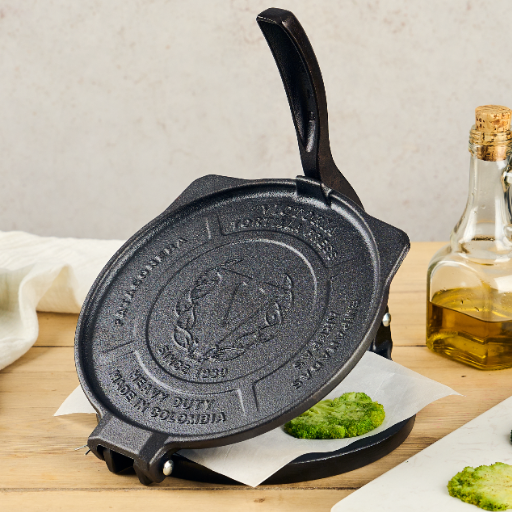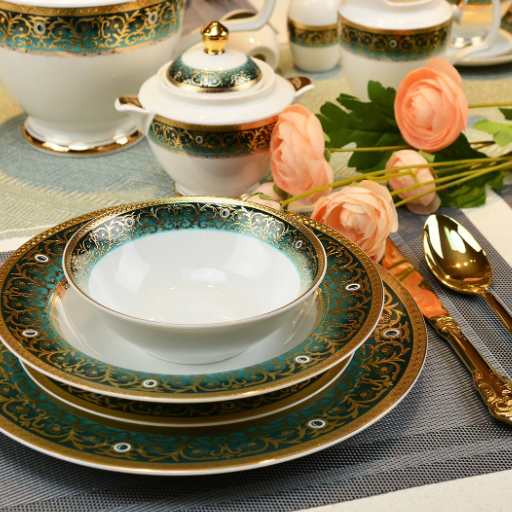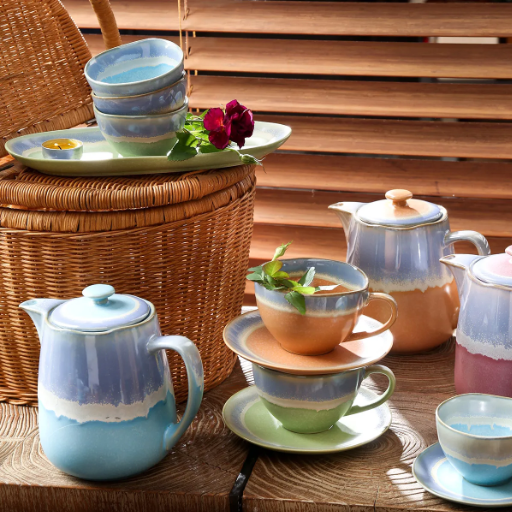In the kitchen, whether one is setting up for a busy commercial concern or creating a culinary sanctuary at home, it is imperative that the right cookware be chosen. The broad and various world of wholesale cookware offers limitless possibilities to obtain kitchen essentials of the highest quality at the cheapest price and cater to a combination of different needs. This guide will feature wholesale cookware essentials, including the main kinds of cookware, materials, and the advantages of bulk purchases. Possibly looking for something that would stand up to the rigors of food preparation in a restaurant or interested in keeping up with the latest trends in kitchenware as a final thought, this complete overview will be of huge help in putting forth pertinent insights into making an intelligent decision. Let’s take a close look at how the wholesale cookware industry works and see how it can take any kitchen setup a few steps further down a commercial scale.
What Types of Wholesale Cookware Are Available?
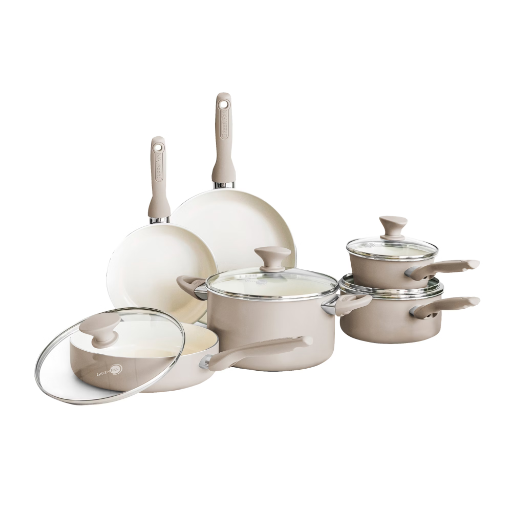
Wholesale cookware spans nearly every type that can be used for cooking in different settings. Major categories include:
- Pots and Pans: Completely basic stuff in any kitchen, with one able to find saucepans, stockpots, sauté pans, and frying pans of different sizes and materials such as stainless steel, aluminum, or maybe coated with non-stick layers.
- Baking Ware: This name stands for sheet pans, baking trays, cake molds, and muffin pans usually made of aluminized steel or silicone.
- Utensils and Tools: These are essential items, such as large quantities of ladles, spatulas, whisks, and tongs ordered by a commercial kitchen.
- Specialty Cookware: More specific will be woks, Dutch ovens, and paella pans, depending on culinary style or technique.
Each cookware type is designed with particular materials and features to maximize efficiency, longevity, and performance in demanding environments such as restaurants or catering shops.
Exploring Cookware Sets
Modern cookware sets aim to serve different cooking needs and, thus, combine a wide selection of pots, pans, and accessories into a single package. High-end sets will probably feature materials such as stainless steel, aluminum, hard-anodized, and non-stick, whereby each was chosen for its great thermal conductivity, life span, and food release ability. Stainless steel sets having aluminum cores are considered one of the very functional types because they are sturdy and conduct heat well enough to allow precision cooking.
Some of the latest technological advancements produce cookware with thermo-insulated or special induction-compatible handles. They also receive an improved non-stick coating devoid of PFOA and other harmful chemicals. In line with this, ceramic-coated cookware and lightweight designs have been developed in an attempt to appeal to buyers who place a priority on eco-friendliness and energy saving. Another important consideration is the number of items in the set because one always wants to purchase the most functional set with the highest wear resistance, as it needs to stand frequent use, either at home or in commercial kitchens.
Understanding Different Pot and Pan Materials
|
Material |
Key Points |
Advantages |
Disadvantages |
|---|---|---|---|
|
Stainless Steel |
Durable, non-reactive, multi-layered option |
Corrosion-resistant, versatile, long-lasting |
Poor heat conductivity, requires layering |
|
Cast Iron |
Heavy, retains heat, versatile cooking style |
Even heating, excellent for searing |
Requires seasoning, prone to rust |
|
Carbon Steel |
Lighter than cast iron, similar properties |
High heat tolerance, retains seasoning well |
Susceptible to rust, maintenance needed |
|
Aluminum |
Lightweight, excellent heat conductivity |
Affordable, distributes heat evenly |
Soft, can warp or react with acidic foods |
|
Hard-Anodized Aluminum |
Treated for durability, non-stick surface |
Scratch-resistant, non-reactive |
Expensive, coatings may degrade over time |
|
Copper |
Superior thermal conductivity, aesthetic appeal |
Exceptional precision in temperature control |
High maintenance, reacts with certain foods |
|
Ceramic-Coated |
Non-toxic, PFOA-free, eco-friendly |
Easy to clean, non-stick by design |
Can degrade or chip over time |
|
Non-Stick |
Coated surface reduces sticking |
Convenient cooking and easy cleaning |
Limited lifespan, sensitive to high heat |
|
Enameled Cast Iron |
Porcelain coating, no seasoning required |
Rust-resistant, consistent heat retention |
Prone to chipping, heavy to handle |
|
Titanium |
Lightweight, durable, non-reactive material |
Strong, corrosion-resistant, non-stick |
Expensive, limited availability |
Choosing Between Non-Stick and Stainless Steel Cookware
One must come to know the specific characteristics, advantages, and disadvantages of both material options before making a choice between a nonstick and stainless steel set. Great for low-fat cooking, non-stick cookware generally has a PTFE coating or the new ceramic coating, requires hardly any oil, and is easy to clean. They are best suited to food with delicate consistencies such as eggs, pancakes, and fish. Still, they don’t last very long. The coatings get scratched or sometimes start degrading, and either are not suitable for high-temperature cooking or not recommended to be exposed to such a high temperature.
How to Choose the Right Cookware for Your Kitchen?

The manufacture of cookware is dependent on what one needs for cooking, cooking style, and budget. One should mainly look at the types of meals he usually prepares. Make sure to get stainless steel for searing and frying because it is durable and can withstand heat. If you frequently cook delicate foods in a pan or just want a straightforward cleanup, nonstick pans will be half a step ahead.
Think about cast iron as for its great heat retention while thinking of aluminum for fast and even heating, and be sure that the items you are going to buy are compatible with your stove-type, either induction or gas. Choose cookware that has solid construction and big, sturdy handles with manageable weight. Good quality cookware is a good investment, so either go for a trusted brand or pieces with good reviews.
Benefits of Stainless Steel Cookware
- Durability and Longevity
The stainless steel used is highly corrosion-resistant, rust-resistant, and staining-resistant and would, however, look good and carry out its purpose after years of use. It can withstand extreme temperatures and is therefore ideal for different heat treatments. If treated properly, it can actually last for a lifetime.
- Non-Reactive Surface
Unlike certain other materials, stainless steel does not react with acidic or alkaline foods, hence preserving from changes in flavor and nutrition of the food ingredients. Thus, tomato-based sauces, citrus reductions, or vinegar-heavy dishes can be cooked without fear of imparting metallic tastes.
- Low Maintenance
Maintenance is easy by washing them; most of them are dishwasher-safe, so less effort for upkeep. It all helps when it’s a smooth and non-porous surface that resists sticking, with due pre-heating and oiling.
- Versatility in Cooking Applications
They work with gas, electric, induction, and oven heat sources. Besides these methods, stainless steel for frying, sautéing, boiling, and baking also delivers consistent results.
- Even Heat Distribution
Many high-grade stainless steel utensils incorporate an aluminum or copper core that is sandwiched between stainless steel layers. This core effectively facilitates fast and even heat transfer. For example, tri-ply or multi-ply utensils have far better results when it comes to eliminating hot spots and uneven cooking.
Evaluating the Durability of Commercial Cookware
Durability becomes an important parameter when considering commercial-grade cookware, as it majorly determines the long-term working capacity of these items besides price. High-quality cookware is usually constructed from tough materials such as stainless steel, carbon steel, or hard anodized aluminum all of which resist warping, corrosion, and wear under continuous usage in high-demand conditions. Structural reinforcement, such as riveted handles and impact-bonded bases, further contributes to the cookware strength under demanding cooking scenarios.
Longevity in materials suggests that multilayered cookware generally with the meaning stainless steel outside and aluminum or copper core, strikes. Durability is very essential; therefore, non-stick cookware will indeed require special attention to coatings. Advanced non-stick coatings, especially when coupled with the correct use of utensils, help resist scratches and chipping, which otherwise may affect life.
What Are the Advantages of Using Wholesale Cookware?
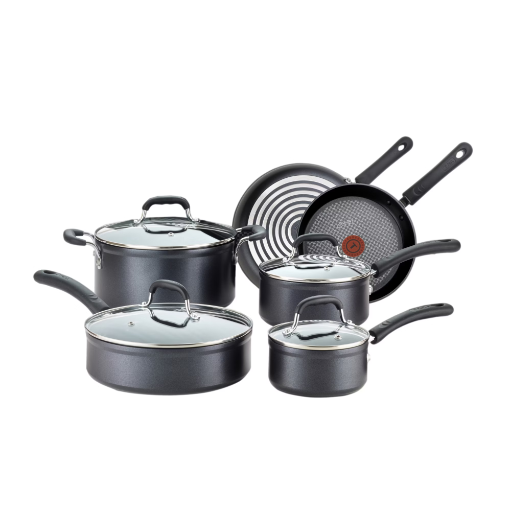
- Cost Savings – Buying in bulk decreases the unit cost tremendously, thus making a good option for any establishment, especially restaurants and catering services.
- Consistent Quality – Generally, customers who buy wholesale cookware can access identical products of superior quality, all of which meet industry standards.
- Variety and Customization – Wholesale suppliers generally have the widest selection of materials, styles, and finishes available, which allows flexibility in choosing items for specific needs.
- Convenience – Bulk ordering means that there will always be a continuous supply; thereby reducing the times it will be bought again, hence easing inventory management.
- Scalability – Wholesale purchases allow businesses to grow swiftly by obtaining the necessary equipment at cheaper costs.
Cost Savings with Wholesale Kitchen Products
Buying kitchen items wholesale grants great savings, benefiting from the economies of scale. Each unit is therefore much cheaper when bought in bulk than when bought from retail shops. For instance, consistent findings in consumer goods markets prove that bulk prices may be at least 20-50% cheaper, thereby affirming this as the financially better option. In addition, wholesale distributors also make it possible for businesses to bypass the costs associated with the intermediate retailer and hence buy high-quality items on competitive terms.
Wide Selection of Cookware and Bakeware
A diverse assortment of cookware and bakeware is essential for meeting the varied needs of both professional kitchens and home chefs. Modern cookware options include materials such as stainless steel, cast iron, non-stick coatings, and carbon steel, each offering specific advantages like heat retention, durability, or ease of cleaning. Bakeware, on the other hand, spans from silicone molds to ceramic and aluminized steel pans, catering to different baking techniques and requirements.
This sector keeps innovating, presenting attributes of multi-layered construction for even heat distribution, temperature resistance for high-temp baking, and ergonomic designs for ease of use. Data from the industry emphasizes the growing preference for non-toxic, environmentally friendly options with increasing demand for PFAS-, PFOA-free, or other harmful chemical-free products. Also, multifunctional cookware has emerged as favorably accepted cookware, mostly in commercial kitchens where every inch of space counts, and so does efficiency. High-quality cookware and bakeware ensure good functioning and baking-enhancing qualities, which means that the investment will pay off with durability and longevity, thus being highly advantageous for both businesses and individuals.
How to Maintain and Care for Wholesale Cookware?
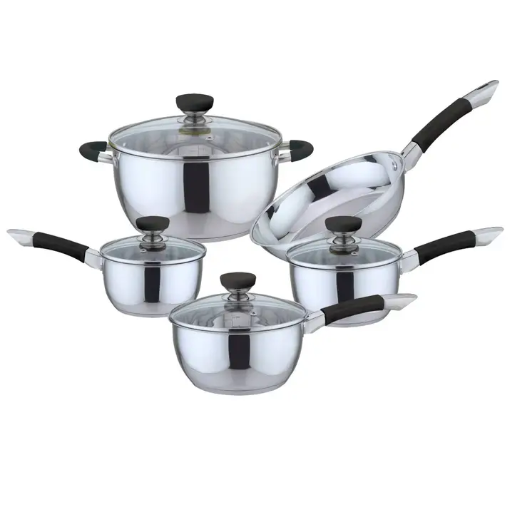
- Clean Thoroughly After Each Use
Food should be washed off with warm water and a mild dish soap. Avoid abrasive cleaners or scouring pads because they will damage the surface.
- Use Proper Utensils
Use-utensils that are wooden, silicone, or plastic instead of anything metal that could damage non-stick and coated surfaces.
- Avoid Overheating
High temperature never benefits cookware: it can cause warping of the material or even a blow to the non-stick coating over time.
- Dry Immediately
Once washed, make sure the cookware dries completely to prevent waterspots or rusting, especially in cast iron while carbon steel cases.
- Seasoning Cast Iron and Carbon Steel
Sometimes, applying a little oil to the cookware and giving it gentle heating will keep the seasoning intact-it also helps prevent rust and improves cooking performance.
- Proper Storage
Unless you want dents and scratches to mark your lovely cookware, always stack with protective padding.
Your care will significantly help the longevity of the cookware and ensure that it carries out its service for many years.
Cleaning Stainless Steel Cookware
When we speak of stainless steel cookware, the first word that comes to mind is probably “durable,” yet with all the variety available on the market, keeping one’s cookware shiny and functional depends on how it is cleaned. Let the cookware cool completely before washing it so that the sudden change in temperature will not warp the pan; never put a hot stainless steel pan under running cold water. For general cleaning purposes, remove food residues with warm water and mild dish soap using a non-abrasive sponge. There are a few remedies when stains, as well as discoloration, occur. You may apply a paste made from baking soda and water or you could also consider using a stainless steel cleaner. Additionally, avoid using steel wool or harsh scouring pads, as these can damage the surface and decrease the cookware’s performance over time. Regular maintenance, including cleaning off mineral buildup with a solution of vinegar and water, will ensure that stainless steel cookware remains in optimal condition through repeated use.
Storing Cookware to Enhance Durability
Where to Find Reliable Wholesale Cookware Distributors?
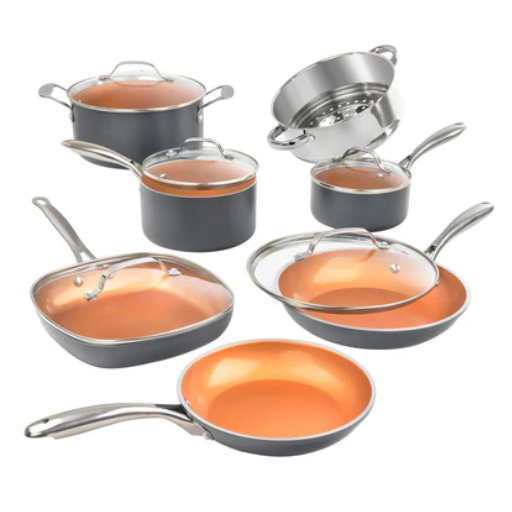
Finding reputable wholesale cookware distributors relies on a combination of industry directories, validated online platforms, and trade shows. Alibaba, Faire, and Thomasnet are some examples of platforms that list dozens of reputable suppliers, complete with reviews and certificates. Going to culinary trade shows or industry expos is useful for networking directly with wholesalers and allows for an evaluation of product quality firsthand. For long-term relationships, consider researching local distributors or joining professional cookware associations, which will often provide directories of vetted suppliers. Make preferences that the distributor offers transparency in pricing, guarantees on quality, and a customer support team ready to solve your issues so that they may meet your business needs.
Online Marketplaces vs. Local Suppliers
In your decision-making process for online marketplaces and local suppliers, it is vital for you to assess the behind-the-scenes benefits and limitations of the two choices as standards depending on what business objectives you envision. Online marketplaces grant unparalleled market accessibility, offering a vast selection of products on a competitive front. Suppliers from different regions can place bids for your business, so this sometimes translates to a competitor drop. Furthermore, increasingly integrated user reviews and ratings further enhance transparency and allow the buyer to judge the reliability of the supplier and the quality of the product. Packing and shipping might be a bit far from being predictable and could stand its own ground on grounds of disparity with quality or terms of delivery in some cases.
Reviews and Recommendations for Top Distributors
1. ABC Regional Supplies
ABC Regional Supplies is a seriously reliable company that is consistent with its product quality. It serves smaller and mid-sized businesses very well with a very quick turnaround time and customer-responsive approach. Although its catalogs are somewhat less extensive than those of global providers, its inventories focus mainly on regional needs, giving competitive pricing for essential items. Numerous customers appreciate the company’s personalized approach and well-thought-out inventory solutions.
2. Nationwide Wholesale Partners
The distributor is known for having a huge line of products that cover almost every area: from manufacturing, construction, retail, etc. Customers love how really easy it is to order from them with their online tools that also make keeping track of inventory and reordering straightforward. A few customer reviews do mention delayed shipping at times during peak periods, an issue management is working to resolve through operational improvements.
3. Premier Supply Networks
A retailer/distributor of the first rank, dealing with the hard-to-get and the niche markets with great honors to endeavoring in finding the more specialized products. The reputation of Premier Supply Networks for exacting detail and high standards of quality is frequently mentioned by reviewers. They can in general be more expensive in price but clients would cite the accuracy and deliverables from them as being worth every penny. They hold training regularly for their salespeople in order that clients would be confident of dealing with someone truly professional and knowledgeable with products.
4. Urban Trade Solutions
Reference Sources
-
Top Cookware Handle Wholesalers in the World 2025 – Discusses the importance of choosing the right cookware handle wholesaler for quality and cost efficiency.
-
Wholesale Cookware Distributor – Offers deals on wholesale kitchen cookware and bakeware, including stainless steel cookware sets.
-
Best Wholesale Stainless Steel Kitchenware Suppliers – Explores top suppliers of stainless steel kitchenware in the market.
Frequently Asked Questions (FAQs)
Q: What are the benefits of using wholesale kitchen cookware?
A: Wholesale kitchen cookware offers cost savings, a wide variety of options, and access to durable materials such as stainless steel and aluminum. It is ideal for restaurants and home chefs looking for quality kitchen supplies at lower prices.
Q: What types of products can I find in wholesale cookware sets?
A: Wholesale cookware sets typically include a range of items such as frying pans, stock pots, baking pans, and kitchen utensils. They may also feature accessories like lids and steamer racks to enhance your cooking experience.
Q: Is stainless steel cookware set better than aluminum?
A: Stainless steel cookware sets are known for their durability and resistance to rust and corrosion, making them ideal for heavy-duty use. Aluminum cookware is lightweight and conducts heat well, but may not be as long-lasting as stainless steel.
Q: Can I find custom cookware options in wholesale kitchen supplies?
A: Yes, many suppliers offer custom cookware options where you can select specific features or designs that cater to your culinary needs. This is particularly useful for restaurants looking to brand their kitchen tools.
Q: What should I consider when buying kitchen utensils in bulk?
A: When purchasing kitchen utensils in bulk, consider the material, durability, and functionality of each item. Ensure you choose tools that are suitable for your cooking style and can withstand frequent use.
Q: Do wholesale cookware suppliers offer free shipping?
A: Many wholesale cookware suppliers do offer free shipping on large orders or specific product categories. It’s advisable to check the supplier’s shipping policy before making a purchase.
Q: How can I ensure the quality of the kitchen tools I am buying wholesale?
A: To ensure quality, look for suppliers that provide detailed product descriptions, customer reviews, and information about the materials used. Also, consider purchasing from reputable manufacturers known for their commercial quality products.
Q: What types of baking pans are available in wholesale kitchen cookware?
A: In wholesale kitchen cookware, you can find a wide variety of baking pans, including cake pans, muffin tins, loaf pans, and cookie sheets. These are available in materials like non-stick, stainless steel, and aluminum.
Q: What are some essential kitchen accessories I should include in my wholesale purchase?
A: Essential kitchen accessories to consider include cutting boards, measuring cups, knives, and mixing bowls. These tools are fundamental for efficient cooking and food preparation.
Q: Can I find specialized cookware for catering services in wholesale kitchen supplies?
A: Yes, many wholesale kitchen supplies cater specifically to catering services, offering specialized cookware like large stock pots, transport containers, and serving utensils designed for large-scale food preparation and service.

